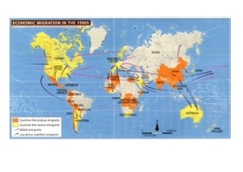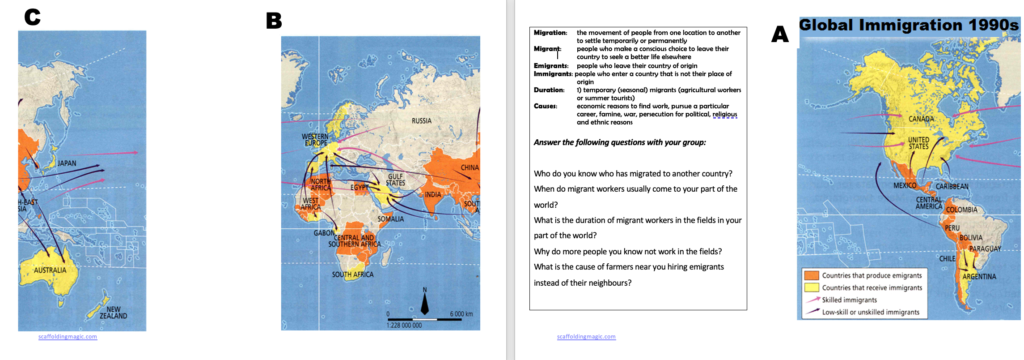You caught a beauty!!!
Download PDF of scaffold here.
‘The mind is not designed for thinking.’* These are probably not the words you were looking for when you set out on the search for ideas on how to motivate your students. And yet, the experts insist that it’s true. We tend to rely on memory – the resource that’s easiest to access – when we are confronted with any task. Critical thinking can be taught but only through techniques, and these techniques are domain specific. This means that a strategy that works in one subject may not work in another. Therefore, as educators, by understanding this contradiction, we need to help our students to fill their toolbox of critical thinking techniques so that they can be successful in as many areas as possible.
This scaffold presents one technique you can use to combat this human tendency of laziness – of relying on memory instead of working actively to further knowledge. We use here a social science lesson on global migration, and you’ll see how you can adapt it to any lesson you’re about to begin.
- Choose or find an image from a unit that best represents …………………
Example: In this case, we’ve chosen a world map that is central to the unit the students are about to begin.

- You can digitally or physically ……………………………..
- Place the ……………………………a. (See video for example.)
4. On one of the pages o…………………………….e. (See template for example.)

- Place the divided im…………………..-book. (See video for example.)
- Students work in pairs. They begin………………………….. of the mini-book that will help them to continue to verbalise their observations.
images one at a time. Yo………………………………………………..ct the suppositions they made when talking about the first third. They continue this dynamic with the last third.
If they looked at the next page immediately, they would f………………………………………., they are not stretching themselves.**
Example of a conversation between students: Page 1 of Mini-Book (1/3 of image):
Image A:
S
Image B:
Student B
.
Etc.
- Formative Assessment: Show students a similar image that represents a……………………… Reporters share the information they’ve been able to identify
- Reflection: Students write 100-150 words on how they felt about learning by dividing up the information into chunks and only focusing on part of the information at a time.
Video showing mini-book in use
Willingham, Daniel T. (2007) ‘Critical Thinking: Why is it so hard to teach?’
** Hattie, 2017 (p. 207)
Podcasts on introducing topics to pre-school students.


Scaffoldingmagic.com is your entryway into DYNAMIC bilingual learning methodologies, such as Phenomenon-Based Learning, CLIL, EMI, and ESL. You’ll find ways to implement critical thinking tools (DOK) to promote higher level thinking, the growth mindset, instill an ethic of excellence, deep reflection on learning, and all through multi-cultural, interdisciplinary activities. We have the keys to turning competences into action and to creating collective efficacy in your school so you move ahead as a unified, enthusiastic team.



